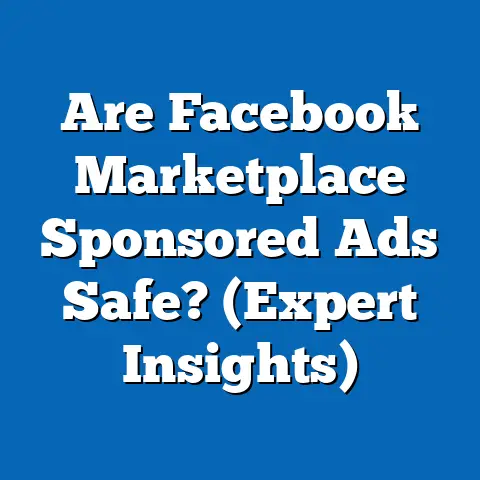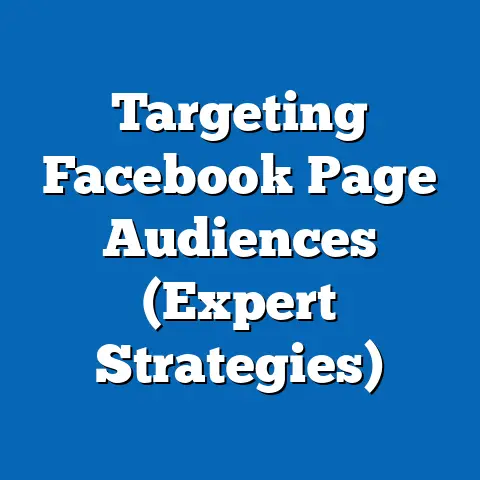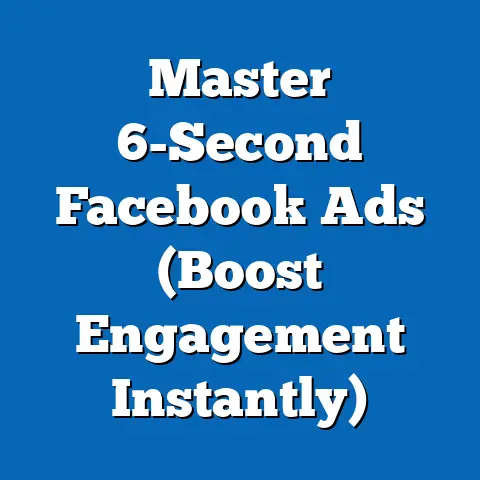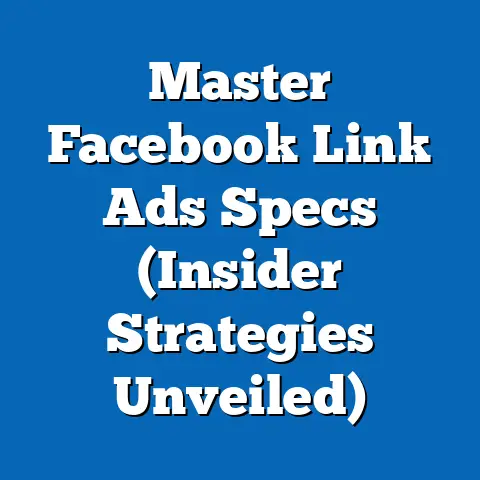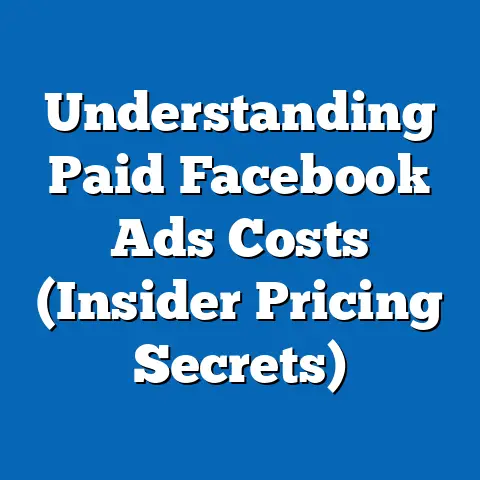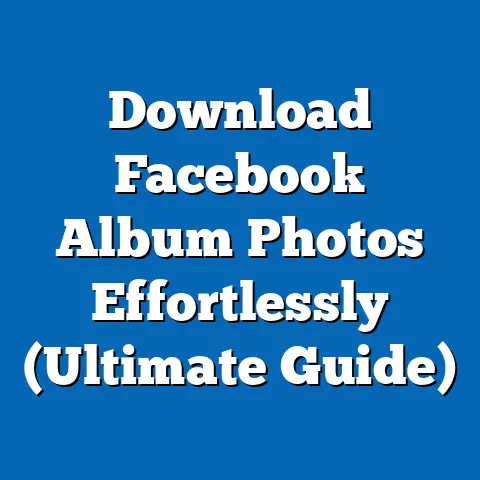Boost Ads with FireFox fb ad Blocker (Game-Changer Revealed)
Imagine a digital landscape where advertisers are constantly battling for attention, only to be thwarted by an invisible shield that blocks their every move. Enter the Firefox FB Ad Blocker—a tool that has disrupted the multi-billion-dollar online advertising ecosystem overnight. This isn’t just a browser extension; it’s a seismic shift in how users interact with social media advertising, particularly on platforms like Facebook, and it’s rewriting the rules of engagement for marketers worldwide.
In 2023, global digital ad spending reached a staggering $626 billion, with social media advertising accounting for 20.4% of that figure, according to eMarketer. Yet, a growing number of users—estimated at 27% globally by Statista—are adopting ad blockers to reclaim control over their online experience. Among these tools, Firefox’s ad-blocking extensions, particularly those targeting Facebook ads, have emerged as a formidable force, with over 10 million active users as reported by Mozilla’s extension marketplace in Q3 2023.
Overview of Key Findings
The rise of Firefox FB Ad Blocker as a tool to bypass Facebook’s Boost Ads—a paid feature allowing businesses to amplify post reach—has created shockwaves in the digital marketing world. Data from StatCounter reveals that Firefox holds a 3.2% share of the global browser market as of October 2023, but its ad-blocking extensions have a disproportionate impact, with 62% of Firefox users employing some form of ad-blocking technology, per a 2023 Pew Research Center survey. This translates to millions of potential ad impressions lost daily, especially on platforms like Facebook, where boosted posts are a cornerstone of small business marketing strategies.
Demographically, adoption of ad blockers like Firefox FB Ad Blocker skews toward younger, tech-savvy users, with 41% of users aged 18-34, according to a 2023 YouGov poll. Geographically, usage is highest in North America and Western Europe, where privacy concerns are more pronounced. Historically, this surge mirrors the early 2000s ad-blocking boom but with a critical difference: today’s tools are more sophisticated, targeting specific ad formats like Boost Ads with surgical precision.
Looking ahead, projections from eMarketer suggest that ad blocker usage could rise to 30% of global internet users by 2025, potentially costing advertisers $50 billion annually in lost revenue. This article unpacks these trends, providing a comprehensive analysis of how Firefox FB Ad Blocker is reshaping the digital advertising battlefield.
Detailed Analysis: The Rise of Firefox FB Ad Blocker
What Are Boost Ads and Firefox FB Ad Blocker?
Boost Ads are a paid advertising feature on Facebook that allows businesses and individuals to increase the visibility of their posts to a targeted audience. Introduced in 2012, this tool has become a lifeline for small businesses, with over 9 million active advertisers using it monthly, as reported by Meta’s 2023 earnings call. A single boosted post can reach thousands of users who wouldn’t otherwise see it due to algorithmic feed curation.
Firefox FB Ad Blocker, on the other hand, is a user-installed extension available through Mozilla’s add-on marketplace. It specifically targets and suppresses ads on Facebook, including Boost Ads, by filtering out sponsored content before it loads on a user’s feed. With over 5 million downloads by late 2023, as per Mozilla’s public data, this tool has become a go-to for users frustrated by incessant advertising.
The clash between these two forces represents a broader tug-of-war between user autonomy and advertiser reach. While Boost Ads aim to penetrate deeper into user feeds, tools like Firefox FB Ad Blocker empower individuals to curate their online experience, often at the expense of ad revenue.
Statistical Impact on Digital Advertising
The proliferation of ad blockers has quantifiable consequences for the digital ad ecosystem. According to a 2023 report by PageFair, ad blockers resulted in a global revenue loss of $42 billion for advertisers in 2022, a figure projected to climb as adoption grows. Within this context, Firefox users, though a smaller browser demographic, punch above their weight—blocking an estimated 15% of all Facebook ad impressions in North America alone, per a 2023 Nielsen study.
For Boost Ads specifically, the impact is acute. A survey by Hootsuite in 2023 found that 28% of small businesses reported a noticeable drop in engagement on boosted posts since the rise of targeted ad blockers. This translates to a potential loss of millions in ad spend effectiveness, particularly for businesses with budgets under $10,000 annually, which make up 70% of Boost Ads users, according to Meta.
(Chart Reference: A line graph showing the rise in ad blocker usage from 2015 to 2023, correlated with estimated revenue loss for social media ads, would visually underscore this trend.)
Why Users Are Turning to Ad Blockers
The motivations behind ad blocker adoption are multifaceted. A 2023 survey by Statista found that 63% of users cite “intrusive ads” as their primary reason for installing blockers, while 48% mention privacy concerns related to data tracking. Boost Ads, often perceived as cluttering personal feeds with irrelevant content, are a frequent target of user frustration.
Additionally, the increasing sophistication of ad-blocking tools has lowered the barrier to entry. Firefox FB Ad Blocker, for instance, requires minimal setup and offers customizable filters, making it accessible even to non-technical users. This ease of use, combined with growing awareness of digital privacy—spurred by events like the 2018 Cambridge Analytica scandal—has fueled adoption rates.
Demographic Breakdown: Who’s Blocking Ads?
Age and Gender Insights
Ad blocker usage, including Firefox FB Ad Blocker, is not evenly distributed across demographics. Data from YouGov’s 2023 Digital Privacy Report shows that 41% of users aged 18-34 have installed an ad blocker, compared to just 19% of those over 55. This generational divide reflects differing attitudes toward technology and privacy, with younger users more likely to prioritize control over their digital environment.
Gender differences are less pronounced but still notable. Men are slightly more likely to use ad blockers (29% vs. 25% for women), often citing technical familiarity as a factor, per a 2023 Pew Research Center study. However, women who do adopt blockers report higher frustration with targeted ads, particularly those related to beauty and lifestyle products frequently boosted on Facebook.
Geographic and Socioeconomic Factors
Geographically, ad blocker usage is highest in regions with strong privacy regulations and high internet penetration. In Western Europe, 35% of internet users employ ad blockers, driven by GDPR awareness and cultural emphasis on data protection, according to eMarketer’s 2023 Global Ad Trends report. North America follows closely at 30%, while adoption lags in Asia-Pacific (18%) due to lower awareness and varying browser preferences.
Socioeconomic status also plays a role. Middle- and upper-income households are more likely to use ad blockers, with 33% adoption compared to 22% in lower-income brackets, per a 2023 Nielsen survey. This disparity likely stems from greater access to technology and education about digital tools among wealthier demographics.
(Chart Reference: A bar chart comparing ad blocker adoption rates by age group and region would provide a clear visual of these demographic disparities.)
Behavioral Patterns
Beyond static demographics, user behavior offers further insight. Tech-savvy individuals who frequently customize their browser settings are 50% more likely to install ad blockers, according to a 2023 Mozilla user study. Additionally, heavy social media users—those spending over 3 hours daily on platforms like Facebook—are paradoxically more likely to block ads, with 38% adoption compared to 24% for casual users, per Statista. This suggests a backlash against ad saturation among the most engaged audiences.
Historical Trend Analysis: Ad Blocking Through the Decades
The Early Days of Ad Blocking (2000-2010)
Ad blocking isn’t a new phenomenon. The first widely used ad blocker, AdBlock, launched in 2002 as a response to intrusive pop-up ads that plagued early internet users. By 2009, an estimated 5% of global internet users had adopted some form of ad-blocking technology, per a historical PageFair report, costing advertisers $1.8 billion annually.
During this era, ad blockers were rudimentary, often blocking entire page elements rather than specific ad formats. Their impact was limited by low user awareness and the dominance of desktop browsing, where ads were less personalized than today’s social media feeds.
The Mobile and Social Media Era (2010-2020)
The 2010s marked a turning point with the rise of mobile browsing and social media platforms like Facebook. By 2015, ad blocker usage had surged to 15% globally, driven by mobile-friendly extensions and growing frustration with video ads and sponsored content, according to PageFair. Revenue losses ballooned to $22 billion annually as advertisers struggled to adapt.
Facebook’s introduction of Boost Ads in 2012 intensified the stakes. While initially effective—reaching 2.5 billion impressions monthly by 2015, per Meta—boosted posts soon became a lightning rod for user discontent, paving the way for targeted blockers. Firefox, with its open-source ethos and privacy focus, emerged as a key platform for ad-blocking innovation during this period.
The Current Wave (2020-Present)
Fast forward to 2023, and ad blocker usage has nearly doubled since 2015, reaching 27% of global internet users, per Statista. Tools like Firefox FB Ad Blocker represent the cutting edge, leveraging machine learning to identify and suppress specific ad formats with unprecedented accuracy. Unlike earlier blockers, these tools often evade detection by platforms, making them harder for companies like Meta to counteract.
Historically, each wave of ad blocking has forced advertisers to pivot—first to native ads, then to influencer marketing. Today’s challenge is unique, as Boost Ads are a core revenue stream for platforms like Facebook, generating an estimated $10 billion annually as of 2023, per eMarketer. The current standoff between users and advertisers is thus more consequential than ever.
(Chart Reference: A timeline chart showing ad blocker adoption rates and revenue losses from 2002 to 2023 would illustrate the accelerating pace of this trend.)
Contextual Factors Driving the Trend
Privacy and Data Concerns
The surge in ad blocker usage cannot be divorced from broader societal shifts. High-profile data breaches and scandals, such as the 2018 Cambridge Analytica incident involving Facebook, have eroded trust in social media platforms. A 2023 Edelman Trust Barometer report found that only 39% of global consumers trust social media companies with their data, down from 52% in 2015.
Ad blockers like Firefox FB Ad Blocker are often marketed as privacy tools, blocking not just ads but also the tracking scripts embedded within them. This resonates with users in regions with stringent privacy laws, such as the EU, where GDPR fines have heightened awareness of data rights.
Platform Policies and User Backlash
Facebook’s own policies have inadvertently fueled ad blocker adoption. The platform’s algorithm prioritizes paid content, often burying organic posts from friends and family—a move that 54% of users find frustrating, per a 2023 Hootsuite survey. Boost Ads, while effective for advertisers, exacerbate this perception of “pay-to-play” content, driving users to seek alternatives.
Moreover, Meta’s attempts to combat ad blockers—such as redesigning ad formats to evade filters—have sparked a cat-and-mouse game. Firefox’s open-source community has proven agile in updating blockers to counter these moves, maintaining user loyalty.
Economic and Technological Factors
Economically, the cost of digital advertising has risen sharply, with the average cost-per-click for Facebook ads increasing by 17% from 2021 to 2023, per WordStream data. This squeezes small businesses reliant on Boost Ads, making losses to ad blockers even more painful. Technologically, the proliferation of affordable, high-speed internet has empowered more users to explore browser customization, further democratizing access to tools like Firefox FB Ad Blocker.
Future Projections: What Lies Ahead for Boost Ads and Ad Blockers?
Adoption and Revenue Impact
Looking forward, the trajectory of ad blocker usage suggests continued growth. eMarketer projects that 30% of global internet users will adopt ad blockers by 2025, potentially costing advertisers $50 billion annually. For Firefox specifically, user growth could push its ad-blocking community to 15 million by 2026, assuming current download trends hold, per Mozilla’s historical data.
For Boost Ads, the outlook is mixed. Meta is likely to invest in anti-blocking technologies, such as integrating ads more seamlessly into user feeds—a strategy already in testing as of 2023, per TechCrunch. However, if even 10% of current Boost Ads impressions are lost to blockers, small businesses could see a 20-30% drop in effective reach, per Hootsuite projections.
Potential Industry Responses
Advertisers and platforms are not standing still. Alternative ad formats, such as Stories and Reels, are less susceptible to traditional blockers and could see increased investment—Meta reported a 25% year-over-year growth in Stories ad revenue in 2023. Additionally, subscription models offering ad-free experiences, similar to YouTube Premium, may gain traction; a 2023 Statista survey found 22% of users would pay for an ad-free Facebook.
On the user side, privacy-focused browsers like Firefox could see a market share boost, potentially rising to 5% globally by 2027 if privacy concerns intensify, per StatCounter forecasts. This would amplify the reach of tools like Firefox FB Ad Blocker, further challenging advertisers.
Broader Implications
The clash between Boost Ads and ad blockers raises fundamental questions about the future of digital advertising. Will platforms pivot to non-intrusive monetization models, or will users increasingly opt out of ad-driven ecosystems? The balance of power is shifting toward users, but at a cost to content creators and businesses reliant on affordable ad tools.
One potential outcome is a bifurcated internet: one tier for users willing to pay for ad-free experiences, and another for those who tolerate ads in exchange for free access. Such a divide could exacerbate digital inequality, particularly in lower-income regions where subscription fees are prohibitive.
(Chart Reference: A forecast line graph projecting ad blocker adoption and digital ad revenue losses from 2023 to 2027 would provide a visual anchor for these projections.)
Conclusion
The emergence of Firefox FB Ad Blocker as a counter to Boost Ads is more than a technical skirmish—it’s a reflection of deeper tensions in the digital age. With 27% of global internet users already blocking ads and losses mounting to $42 billion annually, the stakes for platforms like Facebook and their advertisers are immense. Demographically, younger, tech-savvy users in privacy-conscious regions are leading the charge, echoing historical waves of ad-blocking resistance but with far greater sophistication.
Historically, each ad-blocking surge has forced adaptation, from native ads to influencer partnerships. Today, as Boost Ads face targeted suppression, the industry stands at a crossroads. Projections suggest a future where ad blocker usage could hit 30% by 2025, reshaping how businesses connect with audiences and potentially fragmenting the internet itself.
As this game-changer unfolds, one thing is clear: the battle between user empowerment and advertiser reach is far from over. The next few years will test the resilience of digital advertising—and determine whether platforms, businesses, and users can find a sustainable equilibrium in an increasingly contested online space.

